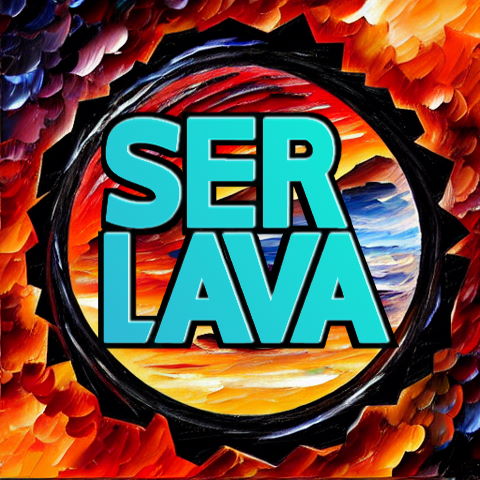The overwhelming majority of Mexicans (somewhere between 50-90%) are metizo, which means (traditionally at least) a mixture of European and Mesoamerican indigenous (like Mexica, Zapotec, Maya, etc) ancestry. Like other places in the Americas, more white (read: primarily European ancestry) Mexicans are generally richer, more "respected," and have much control over the highest and most powerful industries and professions in Mexico. The more "native" you are generally the worse off post-Conquest you were and still are.
It is interesting though that most of Mexico is mostly native Mexican, so you have indigenous folks on their money, indigenous sites revered and respected throughout the country, and a veneration of the direct connection to a long and storied past (albeit a lot of this is rather recent vintage) almost entirely absent in places like the United States and Canada where the native population was mercilessly exterminated and subsequently ignored as part of the nation's founding myths and history rather than integrated and even nominally celebrated.
Like other places in the Americas, more white (read: primarily European ancestry) Mexicans are generally richer, more “respected,” and have much control over the highest and most powerful industries and professions in Mexico. The more “native” you are generally the worse off post-Conquest you were and still are.
NGL, embarrassed to say that I didn't really "get" this, until when I started reading up more on Venezuela and found that they even do the Birther movement type shit down there. US media really tends to downplay the race relations in Central/South Americas. And then the Bolivian coup and those fucking bible-thumping neo-nazis... and then reading The Jakarta Method brought it all together in a historical Worker vs Owners class based context.
Yeah the explanation I have read is that the Great Plains were extremely similar to the Central Asian Steppes but there were no horses.
When horses were introduced by the Spanish in Mexico and migrated North, it drastically changed much of North America. Sedentary agrarian societies became suddenly vulnerable to the nomadic horseback cultures that pretty quickly sprung up, way ahead of the wave of European migration.
I wonder if not for the introduction of horses, those Native American societies would have been more organized and exploitable like mesoamerican cultures, and maybe caused the English to turn the down the Genocide dial a few notches. There were social and like, apparently theological factors involved in the different levels of ethnic destruction, but the practical influence of capital accumulation could have counteracted those tendencies.
Nah, the hardcore extermination was happening waaayyyy before Euros crossed the Mississippi. During the Beaver Wars in New York and around Ohio, native civilians were brutally murdered, scalped, impaled, and generally just constantly harrassed until entire cultures were pushed into the swamps around the Great Lakes (that were havens for malaria-carrying mosquitos). Then during/after the Northwest Indian War, the Americans pushed them out of the swamps and out to Oklahoma along with the Cherokee. And they did the same thing again with Tecumseh's multicultural project, the Miami, and the Potawotami in Indiana/Michigan. If the pretext of "treaties" were not followed then the inhabitants of the area were forcibly removed by the military as "aggressors". The regions east of the Mississippi have some of the lowest native populations to this day, despite having thriving agricultural civilizations at the time of the De Soto expedition (it's generally understood that De Soto's crew were probably the only Euros to witness/record Mississippian culture firsthand before it was wiped out by smallpox).
Ah yeah that's a great point, I suppose the east coast was just as organized as those pre-horse plains cultures.
The Spanish type of colonialism was more permeable racially than the British but still had a European based hierarchy, much like the French Creole system in Haiti. You should read about the Spanish (and Portuguese) Chinese silver trade from the Americas, and the Manila galleons . This kinda helped kick off global capitalism and was both a causal factor for, and later a part of the trans-Atlantic slave trade.
So I'm someone who is from and lives in a Central American country with a heavily indigenous population. It's true that a lot of us (myself included) are mestizo of mixed ancestry. But mestizo also just means mixed because a lot of us also have African ancestry that we never want to admit. I would be careful with calling most Mexicans indigenous. They may have indigenous ancestry but their culture is very much one that takes after Europeans. My country does the same thing with the Mayans. We have their imagery and make references to them, but that's only the Mayans of the past. We treat the modern ones like shit and being referred to as "indio" is seen as an insult.
What makes someone indigenous goes beyond ancestry. You have to be involved in the community and culture. Someone who's got Mayan ancestry but is completely homogenized into the dominant culture is no longer indigenous according to them. I have indigenous ancestry but I can't speak the language and communicate with the indigenous people in my area as an outsider looking in, instead as of one of the community. Therefore I'm not part that group and can't claim it.
The ethnic background of peoples in the various regions of the western hemisphere are indicators of how complete the genocide was in that region. In Central America, the Andes, and in the Arctic, the natives were not wiped out, and continue to exist to this day. In the USA, Canada, Brazil and Argentina, the natives were almost completely wiped out, and so the ancestry of the people who live there are almost all from settler colonialists and enslaved people. At the margins of those regions (which is to say, most of the new world), you get a fusion of all these people.
Because it's been 500 years, it's common for most people in the new world to have a very mixed set of ancestors. Most Mexicans have a mix of native and European ancestors, and a significant minority have only native ancestors (that is, the last Eurasian ancestor was literally one of the people who crossed the bearing straight during the ice age).
Turn Leftist Podcast has a fascinating episode on it, but that's as far into the subject as I've gone. I'd be out of my depth to comment on much past suggesting episode 080: On Chicano Nationalism with Decolonized Buffalo
There are some maps like this that can give you a general idea of what the ancestry makeup is.
https://upload.wikimedia.org/wikipedia/commons/thumb/9/90/Distribution_of_Indigenous_Peoples_in_the_Americas.svg/1600px-Distribution_of_Indigenous_Peoples_in_the_Americas.svg.png
I've had a Mexican roommate who's pretty sure he's 100% Castilian, and another Mexican roommate who had a striking resemblence to those Olmec statue heads (although he only spoke Spanish and English, and had no national affiliation other than Mexican).







